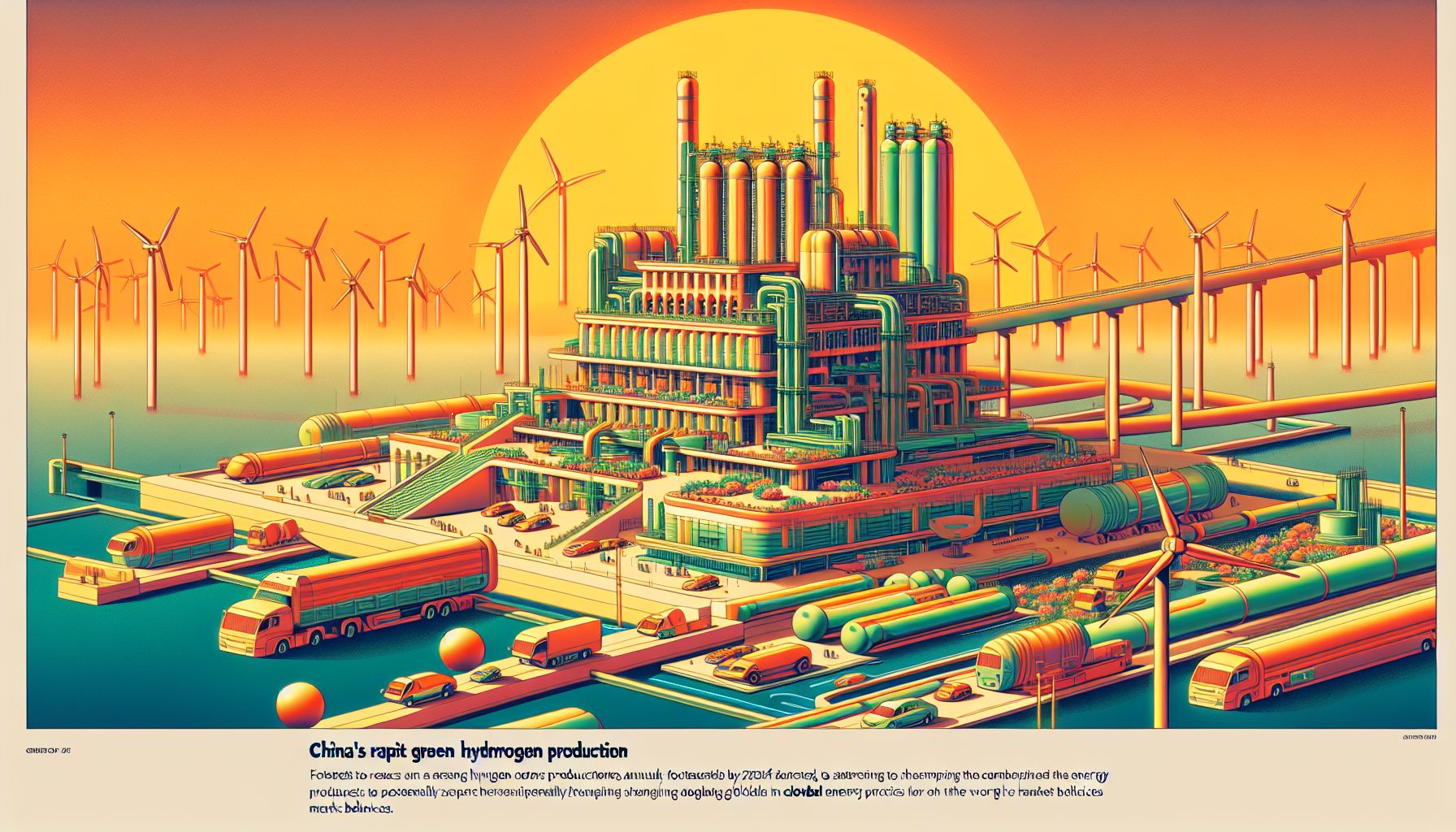China Surges Ahead in Green Hydrogen Production, Challenging Global Markets

Beijing, Wednesday, 21 August 2024.
China is set to exceed its national green hydrogen production goals, producing an estimated 220,000 tons annually by 2024. This output surpasses the combined production of the rest of the world, potentially influencing global energy policies and market dynamics.
China’s Strategic Push for Green Hydrogen
China’s rapid advancement in green hydrogen production is part of a broader strategy to dominate the global renewable energy market. According to Rystad Energy, China’s hydrogen electrolyzer capacity is expected to reach approximately 2.5 gigawatts by the end of 2024. This capacity is projected to produce 220,000 tons of green hydrogen annually, surpassing the government’s target of 200,000 tons by 2025[1].
Key Players and Infrastructure Developments
Central to this surge are major state-owned enterprises such as Sinopec and Tangshan Haitai New Energy Technology. Sinopec is developing a pipeline from Ulanqab in Inner Mongolia to Yanshan in Beijing, initially capable of transporting 100,000 tons of green hydrogen per year, with plans to scale up to 500,000 tons[1]. Tangshan Haitai is working on a 737-kilometer hydrogen pipeline from Zhangjiakou to Caofeidian, aiming to be the longest hydrogen pipeline in the world[1].
Challenges and Renewable Energy Requirements
Despite these advancements, significant challenges remain. The operation of hydrogen electrolyzers requires substantial renewable energy production capacity. Approximately 20 gigawatts of wind power is needed to produce 1 million tons of green hydrogen annually[1]. This presents a considerable hurdle, given the competing demands for renewable energy across China’s vast electrification needs.
Global Impact and European Considerations
China’s progress in green hydrogen not only positions it as a leader in the renewable energy sector but also sets a precedent that may influence European and Dutch policies on hydrogen. As European nations aim to decarbonize, the success of China’s hydrogen initiatives could serve as a model, pushing for similar infrastructure investments and policy frameworks in Europe[2].
Future Prospects and Strategic Importance
Looking ahead, China’s focus on hydrogen as a ‘strategic’ industry underscores its long-term commitment to renewable energy. The National Development and Reform Commission (NDRC) has outlined a comprehensive roadmap for the country’s hydrogen goals from 2021 to 2035[1]. By 2050, the China Petroleum Pipeline Engineering Corporation, a subsidiary of Sinopec, plans to expand its hydrogen network to 6,000 kilometers[1]. This ambitious vision highlights the pivotal role of hydrogen in China’s energy transition and its potential to shape global energy markets.

